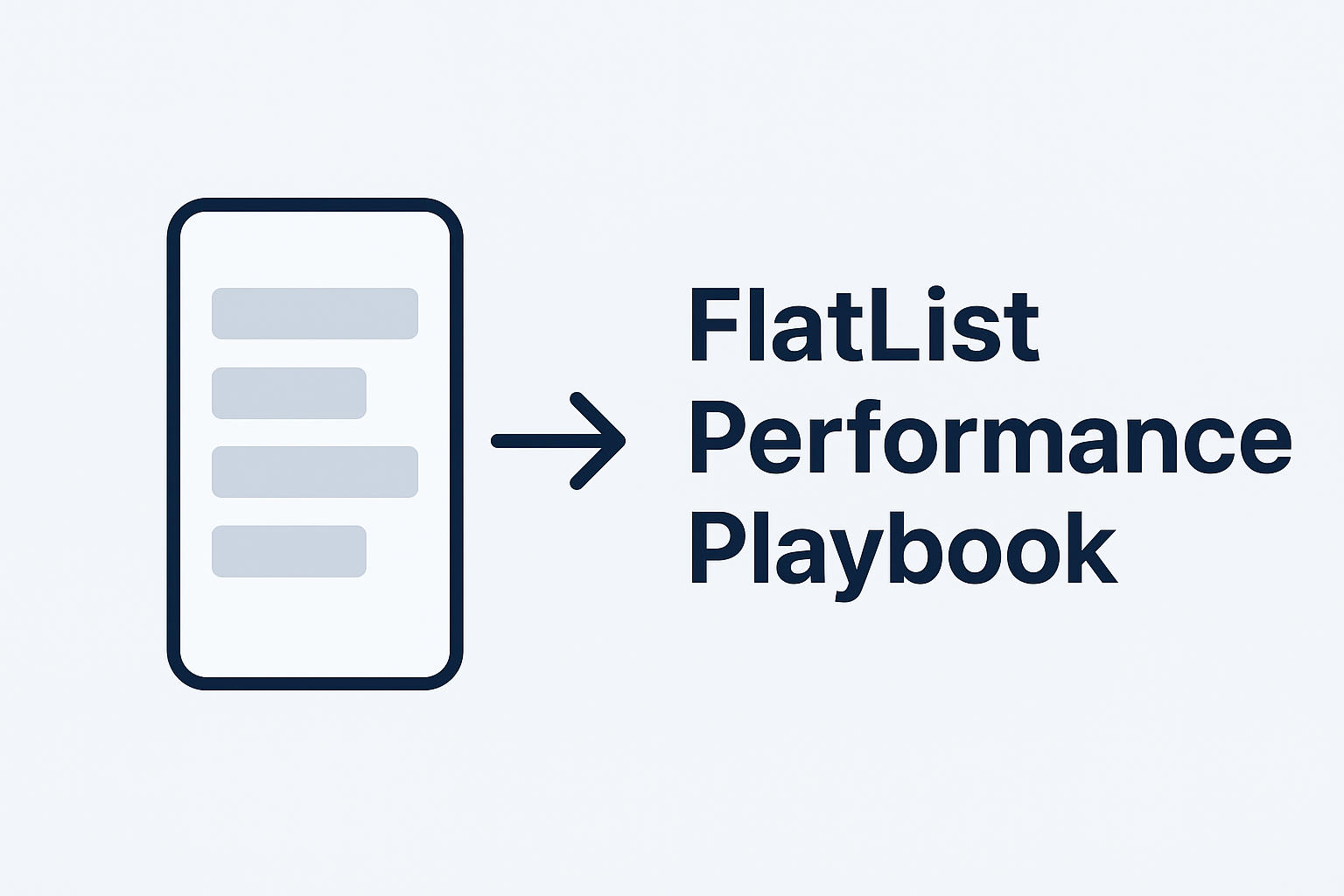FlatList Performance Playbook: Optimizing React Native Lists
Jan 15, 2025
8 min read
React Native
Performance
FlatList
Optimization

Why FlatList performance matters
Large lists are common in production apps (feeds, catalogs, chats). Poor list hygiene causes jank, input latency, and memory spikes. This guide documents a practical checklist, measured on mid-range Android devices and older iOS hardware.
Baseline & methodology
- Enable Performance Monitor (FPS/JS) and sample interactions (scroll, tap, pull-to-refresh).
- Record Flamegraphs with Hermes profiling and Android Studio profiler.
- Capture memory snapshots before/after interactions.
Virtualization & windowing
- Prefer windowSize = 5–9 for content-heavy rows; reduce for lightweight rows.
- Set initialNumToRender to the minimum to fill the viewport + 1 row.
- Use removeClippedSubviews on Android to lower memory pressure in long lists.
Layout calculations
- Implement getItemLayout for constant-height rows to avoid expensive layout passes.
- For variable heights, precompute approximate heights or use sectioned virtualization.
Stable keys & rendering purity
- Always provide a stable, unique keyExtractor.
- Memoize row components with React.memo and selector-based props.
- Replace inline lambdas/objects with useCallback / useMemo.
Image & media considerations
- Use thumbnails (progressive loading), cache aggressively, and avoid layout shifts.
- Defer heavy media (video) offscreen; consider intersection observers where possible.
This playbook reduced jank in production apps with 10K+ item feeds, improving user retention and engagement metrics.